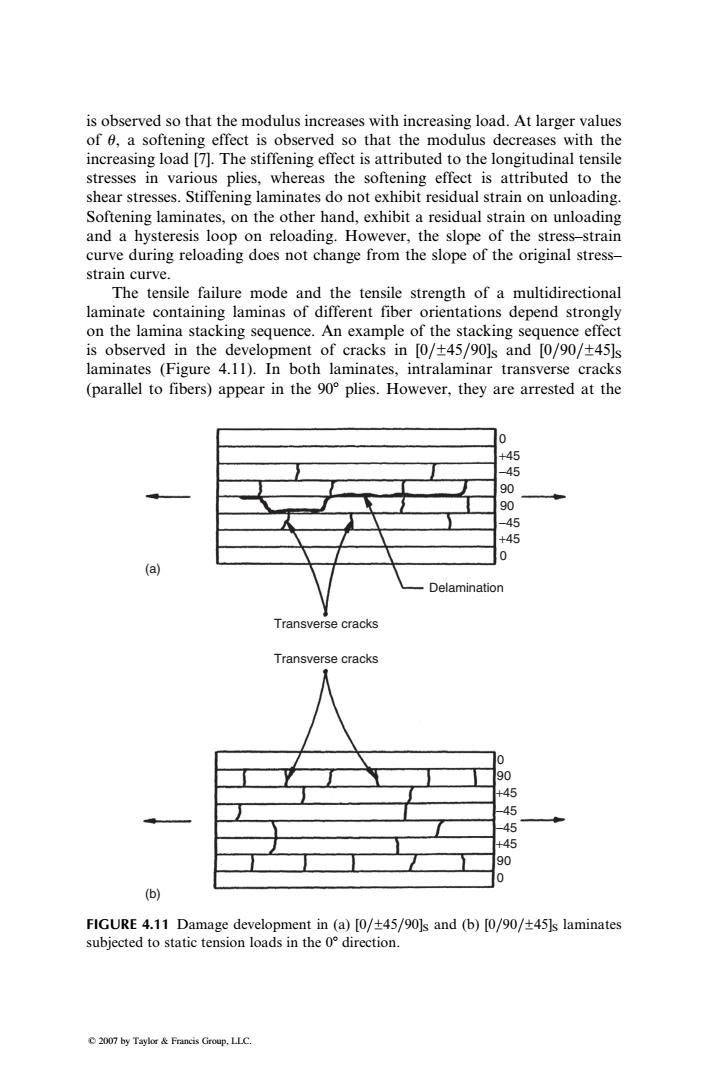正在加载图片...

is observed so that the modulus increases with increasing load.At larger values of 0,a softening effect is observed so that the modulus decreases with the increasing load [7].The stiffening effect is attributed to the longitudinal tensile stresses in various plies,whereas the softening effect is attributed to the shear stresses.Stiffening laminates do not exhibit residual strain on unloading. Softening laminates,on the other hand,exhibit a residual strain on unloading and a hysteresis loop on reloading.However,the slope of the stress-strain curve during reloading does not change from the slope of the original stress- strain curve. The tensile failure mode and the tensile strength of a multidirectional laminate containing laminas of different fiber orientations depend strongly on the lamina stacking sequence.An example of the stacking sequence effect is observed in the development of cracks in [0/+45/90]s and [0/90/+45]s laminates (Figure 4.11).In both laminates,intralaminar transverse cracks (parallel to fibers)appear in the 90 plies.However,they are arrested at the 0 +45 -45 90 90 -45 +45 0 (a) Delamination Transverse cracks Transverse cracks 10 +45 -45 -45 45 9 0 (b) FIGURE 4.11 Damage development in (a)[0/+45/90]s and (b)[0/90/+45]s laminates subjected to static tension loads in the 0 direction. 2007 by Taylor Francis Group,LLC.is observed so that the modulus increases with increasing load. At larger values of u, a softening effect is observed so that the modulus decreases with the increasing load [7]. The stiffening effect is attributed to the longitudinal tensile stresses in various plies, whereas the softening effect is attributed to the shear stresses. Stiffening laminates do not exhibit residual strain on unloading. Softening laminates, on the other hand, exhibit a residual strain on unloading and a hysteresis loop on reloading. However, the slope of the stress–strain curve during reloading does not change from the slope of the original stress– strain curve. The tensile failure mode and the tensile strength of a multidirectional laminate containing laminas of different fiber orientations depend strongly on the lamina stacking sequence. An example of the stacking sequence effect is observed in the development of cracks in [0=±45=90]S and [0=90=±45]S laminates (Figure 4.11). In both laminates, intralaminar transverse cracks (parallel to fibers) appear in the 908 plies. However, they are arrested at the 0 0 0 +45 −45 90 +45 +45 −45 −45 90 90 90 −45 +45 0 Delamination Transverse cracks Transverse cracks (a) (b) FIGURE 4.11 Damage development in (a) [0=±45=90]S and (b) [0=90=±45]S laminates subjected to static tension loads in the 08 direction. 2007 by Taylor & Francis Group, LLC